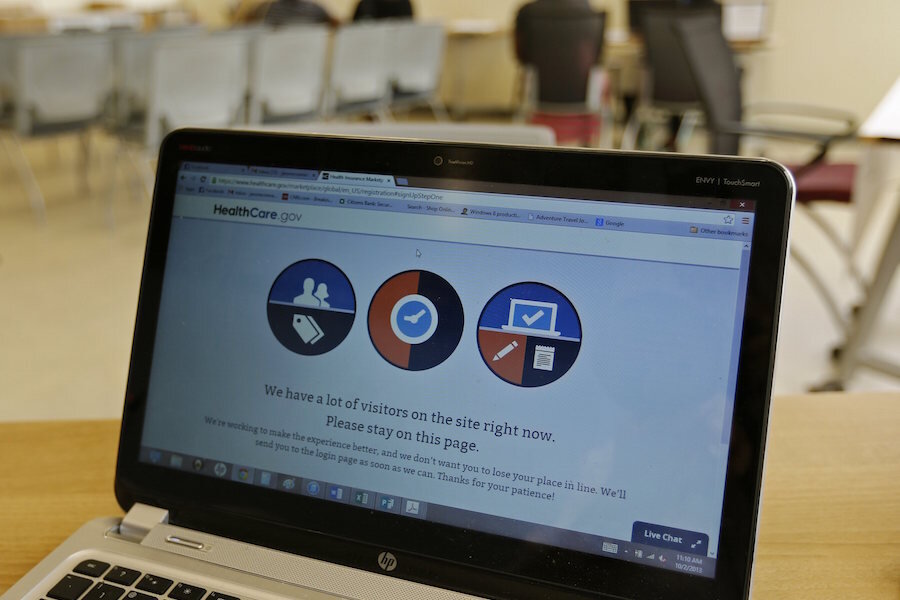When to ditch your state's Obamacare exchange
Since the rollout of state and federal “Obamacare” exchanges three years ago, health plan choices have dwindled in many areas. The Affordable Care Act marketplace was intended to provide a variety of options for those buying individual health plans. But in many states, choices for 2017 coverage will be drastically reduced.
Aetna recently announced plans to pull out of 11 of 15 states’ health insurance exchanges for 2017. UnitedHealthcare, Humana and others have already made similar exits, leaving just one or two insurers to choose from in many areas. Sixteen of 23 health insurance co-ops, which are nonprofit health plans meant to be an alternative to commercial insurers, have failed.
The state and federal exchanges play an important role for those who don’t get insurance elsewhere. Most people who shop on them qualify for tax subsidies to make premiums affordable — 85% of them, according to the Department of Health and Human Services — and using the exchanges is the only way to get that help. Open enrollment for 2017 plans starts on Nov. 1 and runs through Jan. 31.
But if you’re among the 15% who make too much money to qualify for subsidies, there are some compelling reasons to explore your other options.
More plan options, similar prices
Off the exchanges, many shoppers will find more plan options at similar prices. “If you don’t qualify for subsidies, it really doesn’t make sense most of the time to even bother with the exchanges,” says Tim Tracy Jr., a Connecticut insurance broker. Tracy is licensed to sell both ACA plans and off-exchange plans.
In many states, the off-exchange market is much larger than what’s available on the exchanges. If exchange plans don’t have the benefits you need, or you’re willing to pay more for better benefits, you might find better options off your exchange.
Non-ACA health plans still have to use the “metal” tier system that defines a plan’s value — bronze, silver, gold or platinum — so you can compare both types. A silver plan, the most popular tier on exchanges, pays about 70% of costs for the benefits it covers.
But within those tiers, benefits can vary, and the only benefits that matter are those you’ll use.
For example, look at formularies, the lists of medications insurers will pay for. If you need a specialty drug and it’s not on an ACA plan’s formulary, you might find it on a non-ACA formulary with similar premiums. Or you may only find it on an expensive non-ACA’s plan’s formulary. If your drug is also expensive, you’ll likely find it’s worth a higher premium to have it covered.
Similarly, if you have a chronic condition, you could save a lot of money by choosing a health insurance plan with higher premiums because it will pay a larger portion of your medical bills. Higher premiums also typically translate to lower deductibles, so you’ll pay less upfront before your plan starts paying those bills.
When people shop on an exchange, premiums are the largest consideration, followed by out-of-pocket costs, according to the Robert Wood Johnson Foundation. People don’t often consider provider network a high priority, but ignoring the network can cost you.
“A lot of the exchange plans have limited networks, whereas off the exchange we’ve seen much better network access,” Tracy says. That’s because some doctors simply aren’t taking ACA plans from new patients or otherwise.
Networks also include labs, hospitals, urgent care and other facilities. In many health plans, you pay the entire charge or a majority of the bill if you go outside the network. These payments don’t count toward your plan’s deductible or the annual out-of-pocket limits: $7,150 for an individual or $14,300 for a family in 2017.
If going to your primary doctor for a checkup is the extent of your anticipated health care needs, that’s no big deal. But if you need a blood test and your doctor sends it to a non-network lab, or if you’re admitted to a hospital where some providers are out of network, your bills could skyrocket.
Simply put: The larger your provider network, the less you will have to worry about your network.
» MORE: Compare health insurance quotes
Is off-exchange insurance right for you?
If you qualify for subsidies based on your income, the most cost-effective choice is likely to shop on the exchanges — either the federal exchange or your state exchange, if there is one.
You can find out whether your state has an exchange and whether you qualify for assistance by going to Healthcare.gov after Nov. 1, when open enrollment begins, and answering some questions.
If you don’t qualify for subsidies, you can find plans on insurers’ websites, or on independent plan-comparison sites. For personalized assistance, you can contact a broker, but make sure any broker you go to is licensed to sell both Obamacare plans and non-exchange plans.
“It’s important they can do both, because you want that unbiased guidance,” Tracy says.
Lacie Glover is a staff writer at NerdWallet, a personal finance website. Email: lacie@nerdwallet.com. Twitter: @LacieWrites.
This article was written by NerdWallet and was originally published by USA Today.






